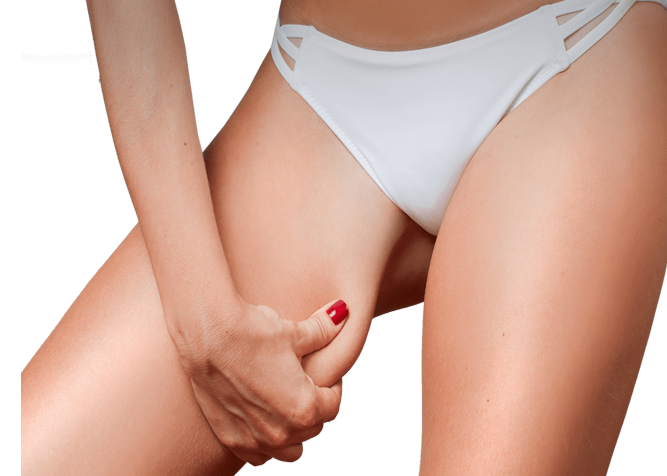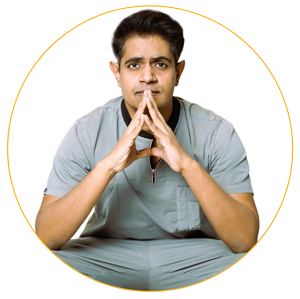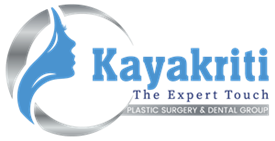Medial Thigh Lift
After bariatric surgery, there's massive loss of weight in most of the patients resulting in very significant amount of loose.

Best Medial Thigh Lift surgery in India
Why Medial Thigh Lift?
After bariatric surgery, there's massive loss of weight in most of the patients resulting in very significant amount of loose and excess skin in many areas of the body which needs cosmetic correction. This loose and excess skin can also be a significant problem in many areas of the body after weight loss following diet and exercise. The cosmetic procedures commonly done after massive weight loss by plastic surgeons are lower body lift, upper body lift, and medial thigh lift.
What can you expect?
The thigh lift is a procedure that involves the removal of excess skin and fat from the inner thighs. This body contouring procedure is often desirable in men and women after bariatric surgery or substantial weight loss. After drastic weight loss, skin and soft tissues fail to retract completely and become redundant, collapsing inferiorly and inferno-medially. This collapse of the skin and fat from the lower abdomen, mons pubis, buttocks, and also the medial thigh itself contributes directly to the excess tissues along the thighs resulting in both a vertical and horizontal tissue excess. There are often complaints of pain, irritation, rashes, and infection under the massive skin folds in the inner thigh region.
Why Medial Thigh Lift?
With increasing age and weight loss, minimal or moderate, the skin and fat become loose and redundant from the loss of tone and elasticity, with sagginess in the medial thigh region. This can cause serious hygiene issues, and mobility restrictions make clothing uncomfortable and aesthetically displeasing. This sagginess steals the joy of your weight loss journey. A medial thigh lift is also indicated in such men and women for whom diet and exercise have failed to reduce excess tissue in their upper thighs.
If you are committed to maintaining a healthy lifestyle and a moderate weight, a thigh lift can help you regain the youthful thigh contours you desire. A thigh lift is often part of a mommy makeover procedure.
A medial thigh lift is a quite common form of cosmetic surgery. It addresses sagging skin in your inner thighs via an incision from your groin down toward your knee or the back of your thigh area. A medial thigh lift can have dramatic results and make a huge difference in how your clothes fit and how you feel about your body. This surgery creates a tighter and smoother contour of your thighs, improving your profile from all angles and leading to renewed self-confidence.
Body contouring surgery should not be done for about one and half years to two years following bariatric surgery or after any massive weight loss program. This time allows for continual fat loss and your skin to shrink as much as possible and your nutrition to be stabilized and optimized, factors that will aid in your recovery process while undergoing body-contouring surgery.
Discussions during medial thigh lift surgery consultation should include
- Your previous records of surgeries.
- Any past or present chronic medical conditions.
- Use of any supplements or under any medications.
- Tobacco and alcohol intake.
- Your thigh reshaping/surgical goals
- History of any allergies.
- Need for supplemental procedures – 'outer thigh liposuction' to get better results
A candidate opting for a medial thigh lift should fill up these criteria for better results
- Men and women who had undergone massive loss of weight through natural means by diet and exercise or bariatric surgery and have loose and sagging skin in medial thigh region.
- Men and women with significant skin laxity, excess skin, sagging thighs on their weight loss journey.
- Body contouring surgery should not be done for about one and half years to two years following bariatric surgery or after any massive weight loss program and your weight should be stable for at least six months, with no further weight loss expected.
- You should be physically healthy with controlled or no chronic medical conditions, such as diabetes, high BP, thyroid issues. You should not have chronic heart and lung diseases.
- You preferably do not smoke. Smoking slows down the healing process and increases the risk of serious complications during and after surgery.
- You should be conscious towards improving your body shape.
- You are willing to accept a thin horizontal or vertical scar on thigh region.
- You should be open to discussion
- You should really know well about what surgery you are planning to undergo
- You should have realistic expectations.
Dr. Amit Agarwal's focus during consultation
- Measure your BMI, assess areas of remanent fat deposits and loose sagging skin over whole body.
- Evaluate the elasticity of skin in thigh region, overall fat deposition on outer aspect of thighs which can be targeted by liposuction in same sitting or separate sitting.
- Rule out pre-existing lymphoedema and deep vein thrombosis
- Assess your medial thigh region for horizontal or vertical excess, pubic area for ptosis, buttock area
- Mention any Asymmetry, Any lumps, Any horizontal creases in thigh?
- Examine your overall health, and risk factors
- Take photographs
- Risk and complications related to surgery
- Highlight the importance of maintaining a healthy lifestyle even after surgery.
Questions to be asked with Dr. Amit Agarwal about lower body lift
- Are you a good candidate for the procedure?
- How long do you have to stay at the centre?
- What is the procedure?
- How are the scars post-surgery?
- How long is the recovery period?
- When can you return to work and daily routines?
- What is expected of you to change in your lifestyle to get better results?
How can you prepare for surgery?
- Get the tests done prescribed by Dr Amit Agarwal.
- Strict scheduled diet to be followed by you before surgery.
- Refrain from drinking alcohol 48 hours before the surgery, since it can affect the anaesthesia
- Do not smoke for two weeks before your medial thigh lift surgery, and four weeks after the surgery
- Avoid taking anti-inflammatory drugs and herbal supplements as they aggravate bleeding.
- All pre surgical work up investigations should be shown to the operating surgeon and the anaesthetist, and we will evaluate your fitness for the surgery. You will be given date for the surgery only after you are declared fit for the procedure.
- Admission will be done on the same day or a day prior at the centre or in the hospitalwhere the surgery would be performed.
- Meeting with the anaesthetist for Pre-Anaesthetic check-up before the surgery.
- Written consent form will be signed explaining the procedure after the admission
- Nil per oral for minimum of 5-6 hours before the planned procedure.
- You should always have an attendant who can accompany you after the surgery for at least 3 weeks.
- Markings will be done before surgery.
Medial thigh lift procedure includes
What is Medial Thigh lift?
The extra sagging skin is classified as mild, moderate, or severe deformity over the medial thigh region. A mild deformity would require liposuction only; a moderate deformity would need an excisional procedure while a severe deformity would require combinations of excision and lifting and would involve large areas of undermining.
What can you expect?
Initially, Dr. Amit Agarwal makes tentative surgical markings on the skin to be excised. General anesthesia is given by our very competent anesthetist and intensivist.
There are three types of incisions based on the specific areas to be treated and how much correction is required:
- Transverse incision - If the correction required is quite less and the excess is in the horizontal direction (seen in maximum people requiring medial thigh lift), an incision is made only in the groin area which extends downwards and wraps around the back of the thigh
- Vertical incision - If the vertical excess is much more than the transverse, a vertical incision is given along the inseam on the medial aspect of the thigh starting on the perineal crease and may reach the knee below the medial condyle.
- Transverse with the vertical component - If the deformity is much more severe and the excess is more in both directions, ellipses of skin are removed with both the incisions in the transverse and vertical direction. Usually, these incisions are placed accordingly so that they can be hidden with almost every type of clothing
Excess pinchable skin and soft tissues are removed from the thigh. Lymphatics are preserved and the incision is closed with absorbable sutures accompanied by skin adhesives. Then the results are overviewed and a smoother, tighter contour of the thigh is visible apparently after the surgery. The major visible part just after the surgery will be swelling and bruising which will subside with time.
Liposuction may be but is not always included with a medial thigh lift, depending on your requirements.
Recovery After the Surgery
How long does it take to recover?
The medial thigh lift procedure has a somewhat lengthy recovery period and will require nursing assistance at home for a minimum of one week.
After the surgery, dressings are applied to the surgical area. You are made to wear a compression garment to support your thigh region. This garment helps in the compression of the skin and also reduces swelling giving you desired body shape and improved contour.
Some temporary drains are placed under the skin to remove excess fluid. These drains are removed on the second or third day of the surgery, and you can go home then followed by the weekly visits or as suggested by Dr. Amit Agarwal. You will be made to walk on the second day of the surgery. We may send you home with a drain if there is excess fluid in the body. It might be preferable to remove the drain at a follow-up visit.
How to recover fast?
Since the surgery will affect your mobility, arrange for one assistant to assist you in the days of recovery. Try to have food supplies and medications readily available for you at home.
You have to avoid strenuous activities as you heal but you should still move around to prevent blood clots from developing in your legs.
- There can be substantial swelling and bruising which usually subsides in 2-3 weeks
- The sutures will be mostly dissolvable and do not require to be taken off.
- In the days following surgery, there will be pain which can be subsided by the pain killers given by Dr Amit Agarwal.
- Soreness might last for few weeks.
- You will be made to walk the very following day, depending on your will and wish.
- You can start exercising after six to eight weeks post-surgery.
- Pressure garment is a must wear for the next 6 months without gap or fail for almost 24 hours a day.
- You can return to work depending on your will power and the type of work required after four weeks.
- You can return to your normal lifestyle after four weeks of surgery.
After a month you will be confident with your newly uplifted profile. You should always follow a healthy lifestyle to maintain your profile and confidence.
Dr. Amit Agarwal will give you specific instructions for
- How to take care of the surgical site
- About the medications and how to maintain the general health.
- About your follow-ups.
The complete result of medial thigh lift Surgery will be seen after the swelling and bruising subsides. You should give your body 6 -12 months for evaluation of the best results
Possible side effects and risks
The complications and aftermaths of the surgery vary from person to person and their physical well-being. Medial thigh lift usually gives desired results but there can be some risks involved which include:
- Risks related to general anaesthesia which are very rare - General Anaesthesia is very safe in present times and with best machines and a qualified anaesthetist, chances of encountering any complication is less than 0.1 percent in a healthy individual. We at Kayakriti Plastic Surgery and Dental centre are equipped with world class anaesthesia workstation, other equipments and two very qualified intensivists for the surgical procedures to be very safe and smooth.
- Lymphoedema of the legs which is rare.
- Risks related to higher BMI (Body Mass Index). Higher the BMI, higher are the risks of wound healing problems
- Seroma formation or fluid accumulation can occur which subsides with time.
- Rare chances of infection and wound dehiscence are there which may require prolonged antibiotic therapy and re-suturing respectively.
- Bleeding or haematoma formation under skin flaps which might mere require observation or surgical drainage
- If you have a poor blood supply, the healing will be poor and chances of wound healing problems is more. (More common in smokers, people with high BMI, diabetics, hypothyroidism and in people with multiple diseases)
- Sometimes irregular contours are seen, which can be corrected with the use of the pressure garment.
- Change in skin sensation is noticed which recovers with time.
- Irregular pigmentation or hypertrophic scarring of the surgical suture line which also recovers with time or might require application of creams.
- Rare event of Deep Vein Thrombosis, fat embolism, pulmonary or cardiac complications, lidocaine toxicity can occur or precipitate in patients with multiple pre-existing diseases diagnosed or undiagnosed by routinely available standard tests.
These are the risks and possible complications which should be discussed by you with Dr. Amit Agarwal before the procedure.
It is also very important to maintain a healthy lifestyle to maintain your shape and contour. If you are unable to maintain it or plan an exercise regime, there can be deposits of unwanted fat at other sites other than the surgical. Then probably you may have to go under another surgery.
Do's and Don'ts of lower body lift
- You should never force your doctor for excess fat and skin removal as it can create complications like compromise in the blood supply of the raised skin flaps.
- You should not get into surgery if you are having any major chronic illness and you should not hide it with Dr Amit Agarwal.
- You should always wear the pressure garment as it reduces swelling and improves your contour.
- You should improve your lifestyle to avoid any further fat deposits in other body parts. So to maintain a shape and slimmer arms you should pursue exercises and proper diet.
- You should consult Dr Amit Agarwal immediately if you have any complications.
Frequently Asked Questions
If you have an excess amount of skin and fat in the thigh region and you want to get rid of it, then you are a suitable candidate for the procedure.
- Clothing and swimwear will fit better.
- Your body will appear shapelier and more proportional.
- Your thighs will be firmer and more youthful, with a curvaceous appearance.
You can be discharged next day or 2 days after the surgery when your drains are removed.
You have to wear it for at least 6 months and may extend to 6 months depending on Dr Amit Agarwal's advice.
You can start exercising after 6-8 weeks of surgery and as Dr Amit Agarwal suggests depending on your healing process.
During the procedure you will not feel any pain but there may be some pain and swelling during the recovery process which will be taken care of by medications.
Quitting smoking is a perfect solution even without surgery as it involves many health risks, but it's totally up to your wish that you want to quit or not. But you should surely stop smoking at least 2 weeks before the surgery.
Know your surgeon better

Best plastic surgeon, Dr. Amit Agarwal is an American Board Certified, extensively trained, and best Plastic & Aesthetic surgeon in Lucknow. He is the Chief Plastic Surgeon heading the Department of Plastic, Microvascular, and Craniofacial surgery at Vivekananda Polyclinic and Institute of Medical Sciences, Lucknow, U.P, India. He maintains a busy practice at Avadh and Nishat Hospital and his own center - Kayakriti Plastic Surgery & Dental Center. He was formerly a Consultant in the Department of Plastic Surgery and Burns at the prestigious SGPGI, Lucknow.
MS, DNB (General Surgery) MCh, DNB (Plastic Surgery),
MNAMS, FACS, FICS, FRCS (Edinburgh, UK)
His Credentials
Three pillars of kayakriti
Privacy
We believe your experience with us should be comfortable and hassle-free to make it one of your best lifetime experiences for yours. We, here at the clinic, take full precautions to maintain your privacy in any manner. We also provide a staff who will receive you from the gate and take you to the chamber directly if you demand.
Trust
Our Surgeon is highly qualified and internationally certified with a team of skilled staff to perform any surgical or non-surgical treatment on your body.
Safety
When you plan to undergo any surgery you should always keep in mind that it's your body and it's a surgery. We, here always keep your safety a priority and will never recommend you to undergo any such procedure which is not safe for you. We also provide you with a detailed description of the complications which may occur after the surgery during the consultation as it's a surgical procedure so there may be some complications depending on the way your body reacts.
Kayakriti in news



Frequently Asked Questions
If you have flat or small breast and you want to improve your breast and hip contour ratio then you are a good candidate for it. The answer will be best provided after the first consultation with Dr Amit Agarwal.
Acute pain will be there for almost a week which gradually reduces and there will be soreness and swelling which may take up to 3 weeks to subside.
You can join your work and daily routines after a week of the procedure and can start exercising after 3 weeks of it.
Yes, you have to wear it round the clock unless we suggest you to remove it.
This surgery does not affect the ducts or the areas of the breast involved in milk production. Thus, it does not affect the breast feeding.
This surgery does not affect the ducts or the areas of the breast involved in milk production. Thus, it does not affect the breast feeding.












Kayakriti Plastic Surgery & Dental Center
D-43, Near Punjab National Bank, Rajajipuram, Lucknow, Uttar Pradesh - 226017, India
Phone No. +919695940009, +919695940006
Map Location





























Social Media Presence